Page Contents
ToggleVenice Points of Interest | Venice Guide
One of the world’s most popular destinations is Venice. A Venetian experience is something you will never forget and it is quite romantic for the first timers and couples. Little about the history of Venice, it is the birthplace of Antonio Vivaldi, a composer and to Carlo Goldoni, a playwright. The city is also an inspiration for many writers like Ernest Hemingway. Today we can see a flock of tourists and travelers visiting the city to see the works of art, beautiful historic buildings and the bridges. If you want the experience of traveling to Venice, a remarkable and long-lasting one then you must not miss this list of top 10 best places to travel in Venice. Venice is the popular urban destinations in Italy and is known for its canals, and historic buildings. You won’t see a single car in the city. If you can spend some money then you must take a gondola cruise on these legendary canals of Venice. There are also some plenty other affordable and free services which are equally exciting.
1. Saint Mark’s Square or Piazza San Marco Venice:
Saint Mark’s Square or Piazza San Marco is the heart of Venice city and is one of the biggest public spaces in the city. It is a well-known spot for any tourist and locals alike and is often referred to as “The Piazza”. There are many other Piazzas in the city as well. This particular Piazza is lined and surrounded with beautifully structured historic buildings with windows that are in arch shape. This is a favorite photo spot for tourists. Another photo subject place is the pigeon flock that inhabits the Saint Mark’s square. There is also a smaller adjoin Square that houses some of the spectacular views of the canals of the lagoon and the historic buildings that surrounded it. Don’t miss that spot when you are at the Saint Mark’s Square.
2. Doge’s Palace Venice:
A must see attraction the city of Venice is the Palazzo Ducale. It is one of the oldest buildings in the city and is erected in the 14th century as the Doge’s residence. The specialty about this building is it features a typical gothic architecture. This Ducal palace was turned into a museum in the year 1923 which displays an extensive collection of the masterpieces and also hosts various art exhibitions. You must take an inside tour and should check out the Giant’s staircase in the courtyard. After that visit the Doge’s apartment which is decorated lavishly and also the Senate Hall. Take a walk on the bridge of sighs; it is the only bridge that is fully covered which was used as a walkway to prison where prisoners can get a fresh air. Take a Secret Itineraries tour and discover the secrets and mysteries of the Doge’s palace.
3. Rialto Bridge or Ponte di Rialto Venice:
Rialto Bridge is a historic bridge that spans the Grand Canal which is the central waterway of Venice. This bridge was built in the 16th century and is itself a beautiful attraction and it is seen as the picture worthy construction as it offers beautiful views of the canals and also the historic buildings lining it. You must click a picture from this spot when you visit this place. Rialto is one of the important retail districts for over a thousand years. Today the fish markets and produces still operate near the bridge, in an area just like old times, before hundreds and hundreds of years.
4. Ca’ Rezzonico Palace and Museum Venice:
If you want to explore the venetian art belonging to the 18th century then you must pay a visit to the magnificent palace in the Venice which is turned into a museum, Ca’ Rezzonico Palace, which is close to Campo San Barnaba. You can discover halls and ballrooms fully decorated with splendid art works by many important Venetian artists like Longhi, and Tiepolo. If you take a walk from Campo San Barnaba to Ca’ Rezzonico, you can find in a beautiful and quiet garden where you can take some rest from all the noises of tourists.
5. A Visit during Carnevale Venice:
Like many other predominantly catholic cities in the world, Venice is also a city that takes carnival seriously and is called carnevale in Italian. The carnival starts before the start of the Easter season. You won’t find any scantily clad dancers, floats, bead tosses and mess in this venetian carnival, instead you will find venetians with masks and costumes, which makes this carnival very unique and worth watching. Mask parades will take place about a month and a half before the Easter festival, which is usually in mid-February. Boat parades and fireworks will also be a part of the festivities or the carnevale.
6. St Mary of the Friars Church Venice:
Basilica Di Santa Maria GloriosadeiFrari which is located near the Scuola Grande di San Rocco is a building that serves as a wonderful example of the gothic architecture. The beautiful façade of the building will leave the visitors and tourists in awe and you will be surprised to find many art treasures inside the church including the masterpiece of Titan, Bellini and Donatello.
7. Ai Mercanti Restaurant Venice:
Ai Mercanti Restaurant is a restaurant that is well hidden in the Campo San Luca and Campo Manin areas and is bit off the track but it is still a worth visiting it. you can get pleasant surprise by the creative combinations of th ingredients they use in their recipes and the elaborate fusion menu of the restaurant. They also have a great selection of wine. You must try the sea bass tartar and the rabbit terrine in the restaurant. Address and contact: San Marco 4346, Corte Coppo +39 041 5238269
8. Regata ‘Storica Venice:
The word Storica means historic and this regatafeature the historic things which are the classic boats along the grand canal in the Venice. The boats in this regata are rowed by the people costumed from that period the boat is from. The procession is then followed by a series of boat races that can draw spectators and the participants from all around the city.
9. Santa Maria della Salute Venice:
Santa Maria della Salute is situated on a narrow strip of land near the Saint Mark’s Square in the Grand canal. This church is one of the most visible parts in the Venice skyline and the interiors of this beautiful and fascinating structure features an airy and arching design with ornate and intricate statues.
More Venice Points of Interest
-
St. Mark’s Basilica
-
Canale Grande (Grand Canal)
-
Scuola Grande di San Rocco
-
Ca’ d’Oro
-
Murano and Burano
-
Peggy Guggenheim Collection
-
Santa Maria Gloriosa dei Frari
-
Gallerie dell’Accademia (Fine Arts Museum)
-
Santa Maria dei Miracoli
-
Palazzo Rezzonico
-
Torcello Island
-
Lido
-
The Arsenal and the Museum of Naval History
-
Teatro La Fenice
-
Chiesa Della Madonna Dell’Orto
-
Jewish Museum
-
Venetian Arsenal
-
Santi Giovanni E Paolo
-
Museo Correr
-
Lido Di Venezia
-
Rialto Market
-
Ponte Dell’Accademia
-
Punta della Dogana
-
Venetian Ghetto
-
Torre dell’Orologio
-
Campanile
-
Bridge of Sighs
-
San Giorgio Maggiore
-
Correr Civic Museum (Museo Civico Correr)
-
Musica A Palazzo
-
T Fondaco Dei Tedeschi
-
Venice Free Tours La Bussola
-
Chiesa di Santa Maria Assunta
Things to do in Venice
- St. Mark’s Basilica
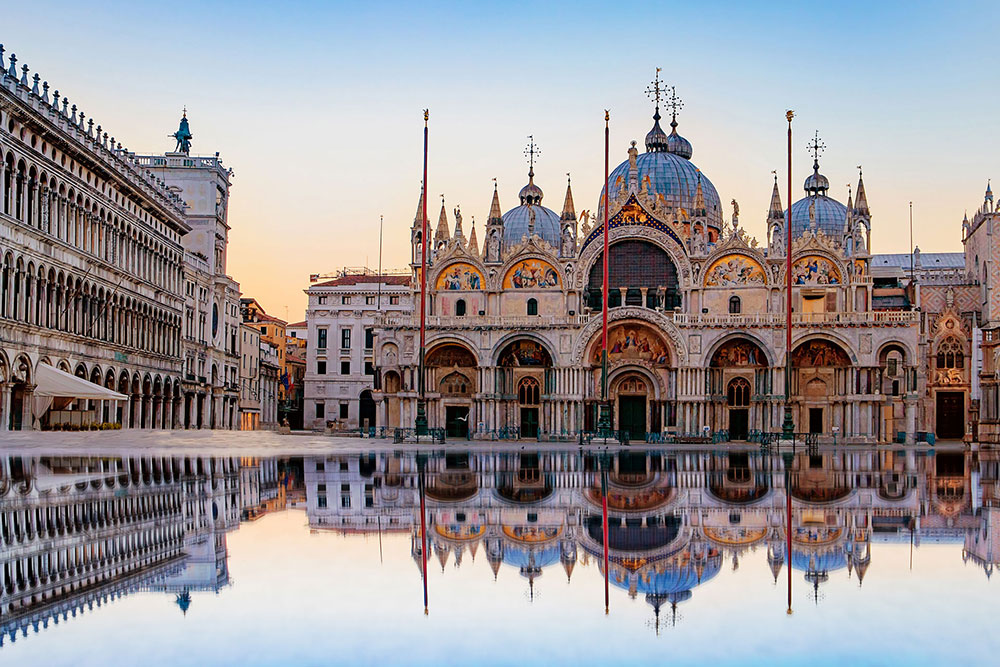
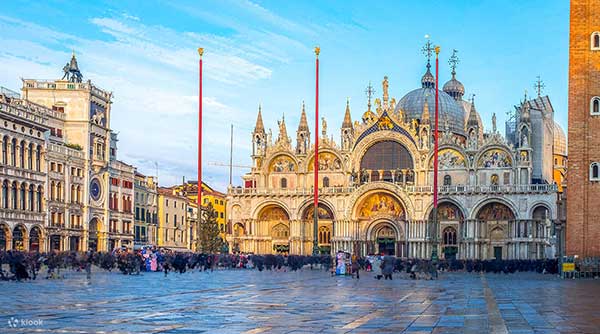
The Roman Catholic Patriarchate of Venice’s cathedral church is the Patriarchal Cathedral Basilica of Saint Mark, often known as St. Mark’s Basilica. It took the place of San Pietro di Castello’s older cathedral in 1807 as the Patriarch of Venice’s episcopal seat. One of the most popular attractions in Venice and a must-see on every traveler’s Italy itinerary is St. Mark’s Basilica.
- Canale Grande (Grand Canal)
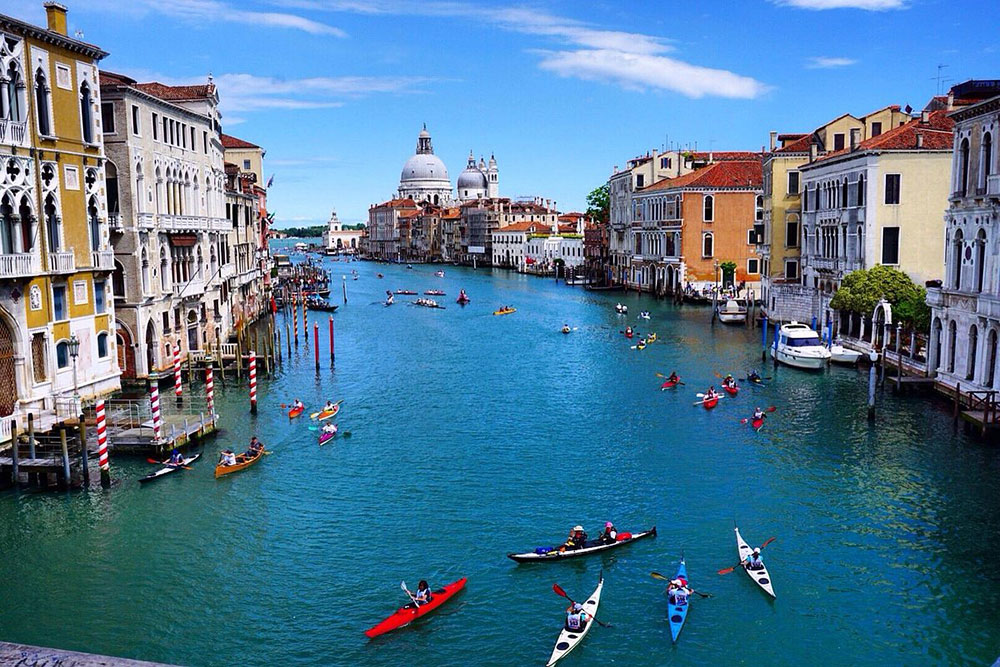

Venice, Italy has a canal called the Grand Canal. One of the city’s main water traffic channels is formed by it. In Saint Mark’s, where the Grand Canal comes to an end, the magnificent vista of the basin spreads out in front of us. The “church of Salute” and the “Punta Della Dogana” (Custom Point) are on the right, while the amazing view of Saint Mark’s Square is on the left.
- Scuola Grande di San Rocco
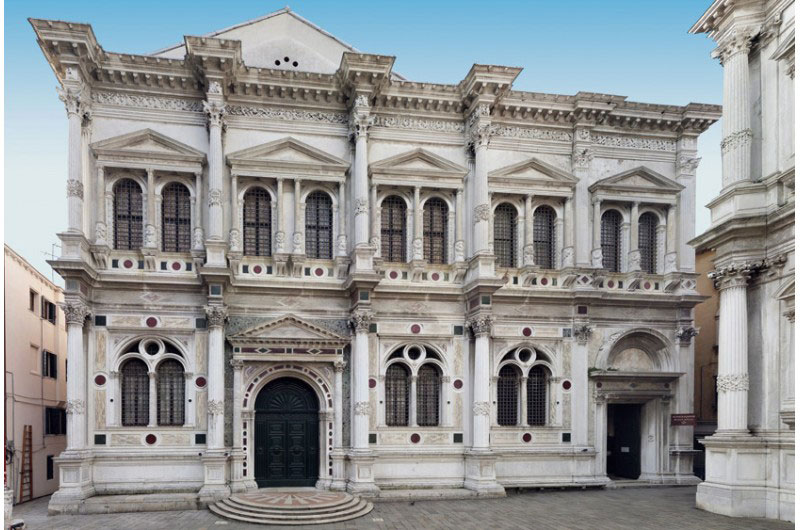

A lay fraternity called the Scuola Grande di San Rocco was established in 1478. The brotherhood’s quick growth to the point that it became the richest Scuola in the city was facilitated by the popularity of the worship of St. Roch, whose remains had been in their possession since 1485.
- Ca’ d’Oro
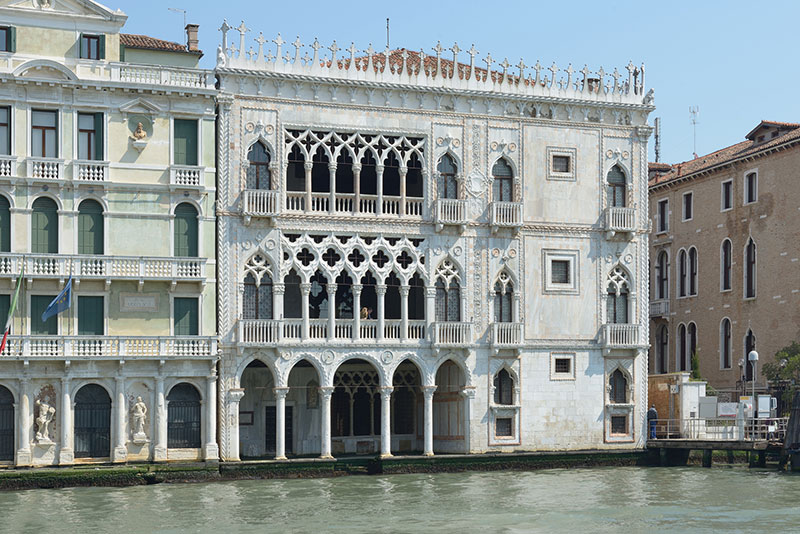
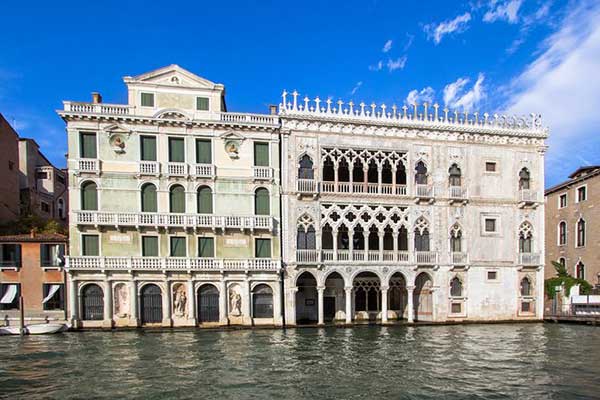
On the Grand Canal in Venice, northern Italy, is a palace known as Ca’ d’Oro or Palazzo Santa Sofia. One of the ancient palaces in the city, its name translates as “golden house” because of the exterior embellishments on its walls that were formerly made of gilded and various colors. Cannaregio is served by two Grand Canal bridges, the newest of which (Constitution, 2008) is still a source of local debate.
- Murano and Burano

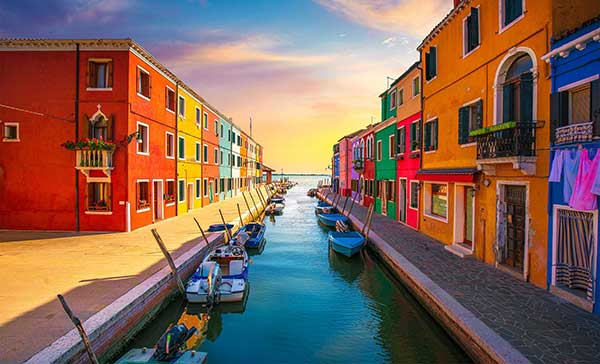
Municipality 1 Venezia-Murano-Burano, which includes the Venice Lagoon and its islands, is a popular tourist destination known for its elaborate buildings, especially St. Mark’s Basilica, and sumptuous palaces that line the Grand Canal. Renaissance paintings are displayed in galleries like the Gallerie dell’Accademia, while modern art is the emphasis of the Peggy Guggenheim Collection.
- Peggy Guggenheim Collection
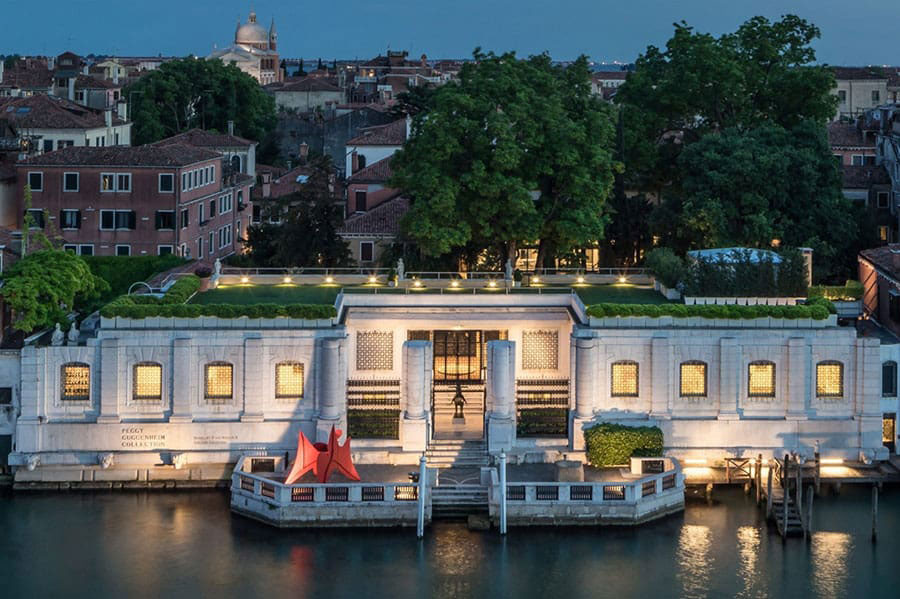
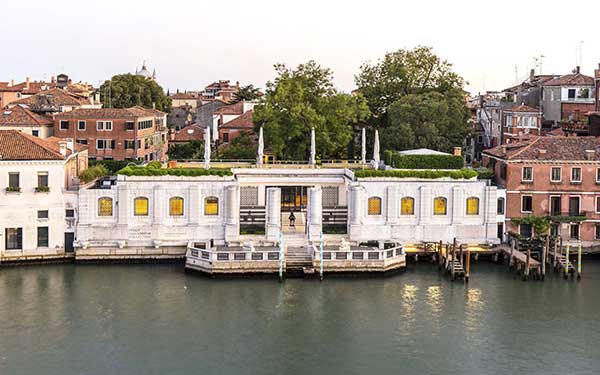
In the Dorsoduro district of Venice, Italy, on the Grand Canal sits the Peggy Guggenheim Collection, a museum of contemporary art. It is among the most popular tourist destinations in Venice. The collection contains the creations of well-known Italian futurists and American modernists who were active in the Cubist, Surrealist, and Abstract Expressionist movements. It also has sculptures.
- Santa Maria Gloriosa
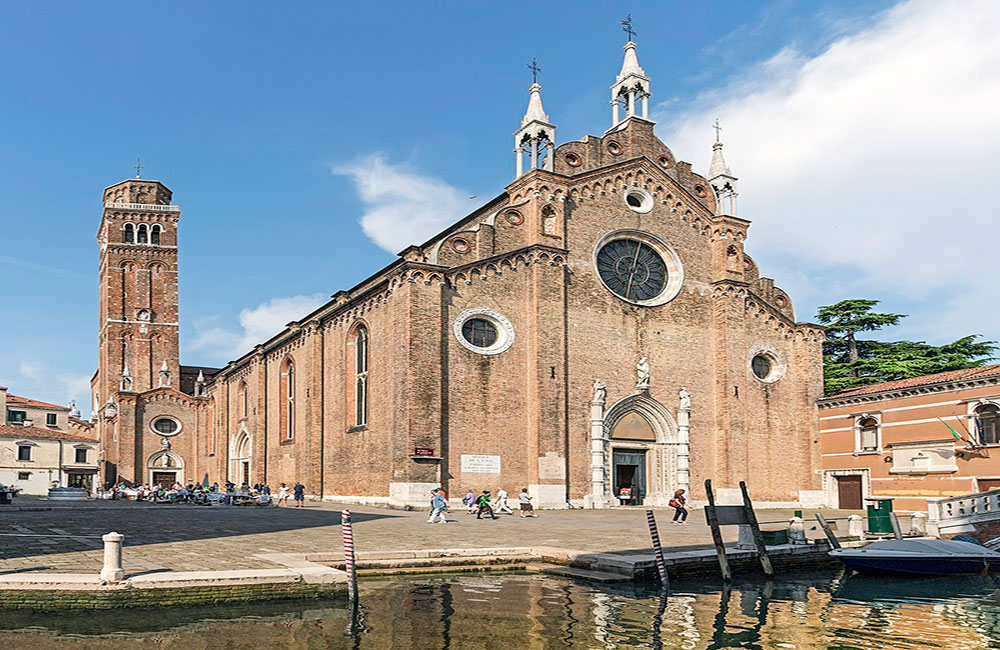
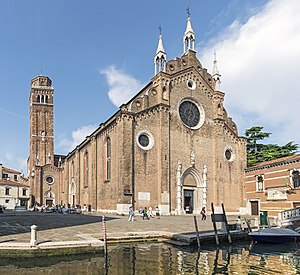
The Basilica di Santa Maria Gloriosa Dei Frari, more often known as the Frari, is a church found in the Campo Dei Frari, in the center of Venice, Italy’s San Polo neighborhood. It is classified as a minor basilica and is the biggest church in the city. The Assumption of Mary is the focus of the church.
- Gallerie dell’Accademia ( Fine arts Museum)
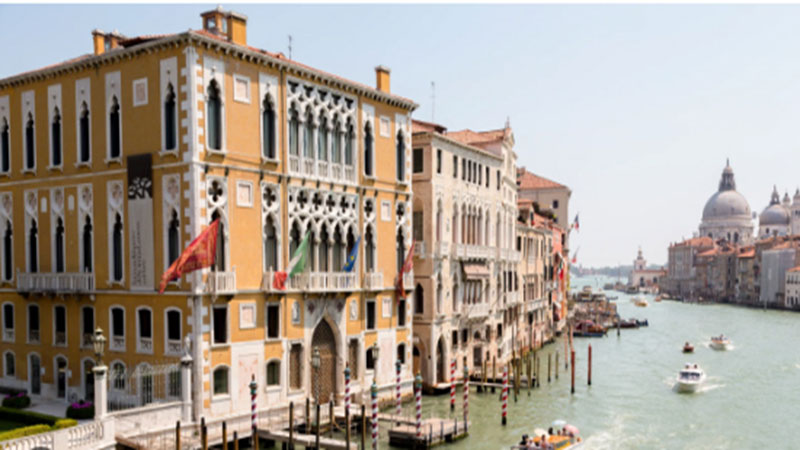
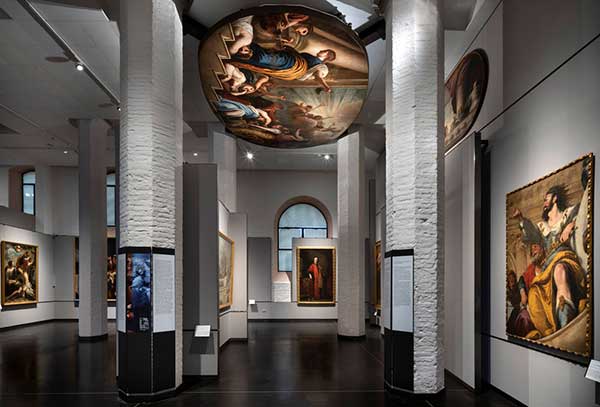
In Venice, northern Italy, there is a museum gallery dedicated to pre-19th-century art called the Gallerie dell’Accademia. It is located in the Dorsoduro sestiere and is housed in the Scuola della Carità on the south side of the Grand Canal. Masterpieces of Venetian art from the 16th to the 18th centuries may be found in the Gallerie dell’Accademia, which is mainly organized chronologically with specific themed exhibitions.
- Santa Maria dei Miracoli
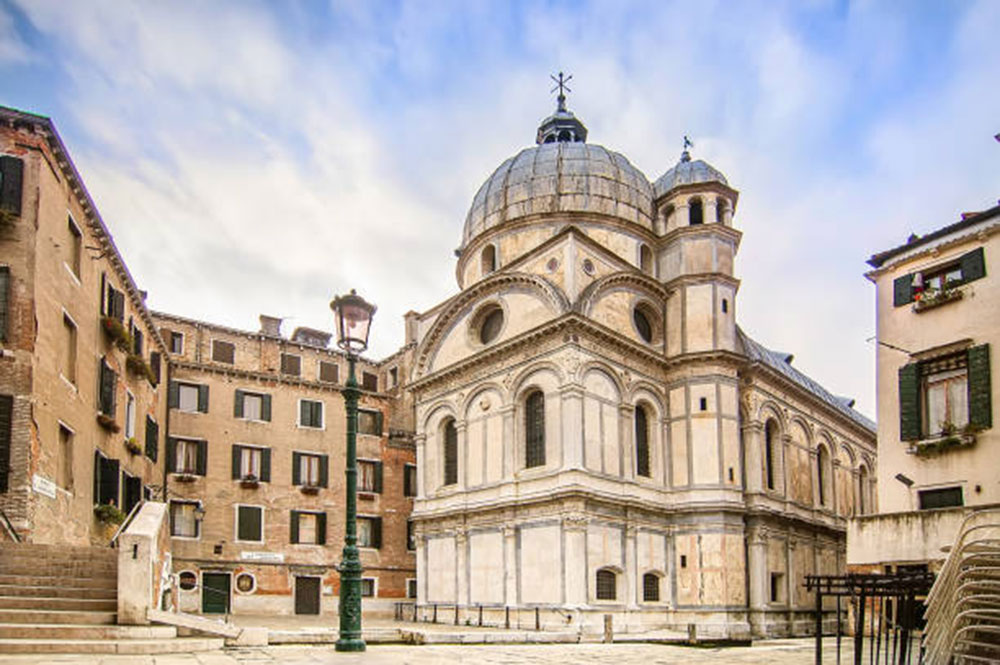
One of the outstanding specimens of the early Venetian Renaissance, sometimes known as the “marble church,” has colored marble, a faux colonnade on the outer walls (pilasters), and a semicircular pediment. Over a period of seven years, from 1990 to 1997, Save Venice Inc. repaired the church (after several years of preliminary research).
- Palazzo Rezzonico
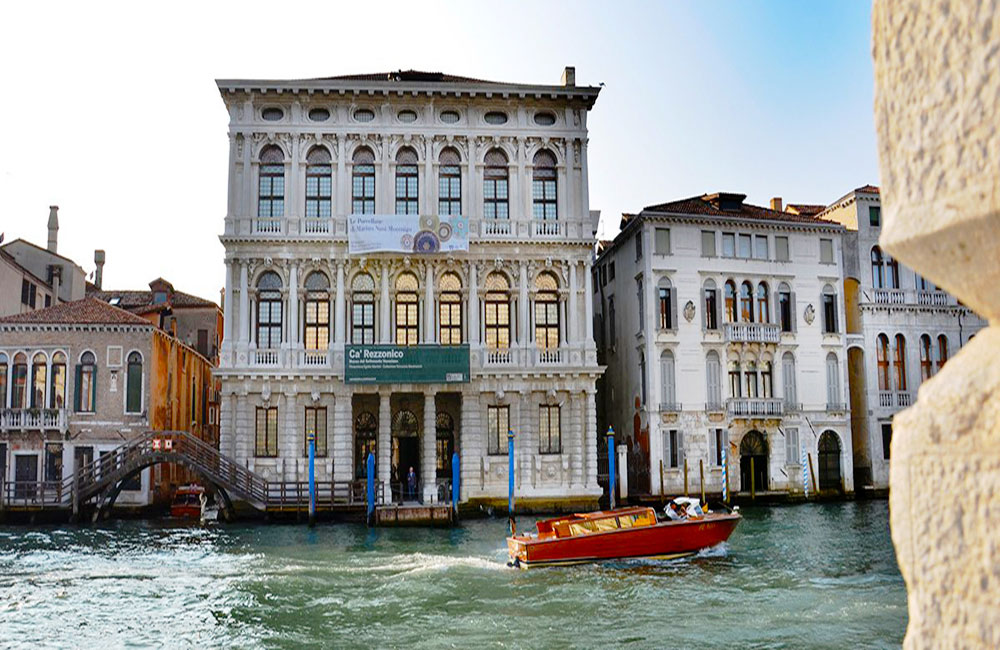
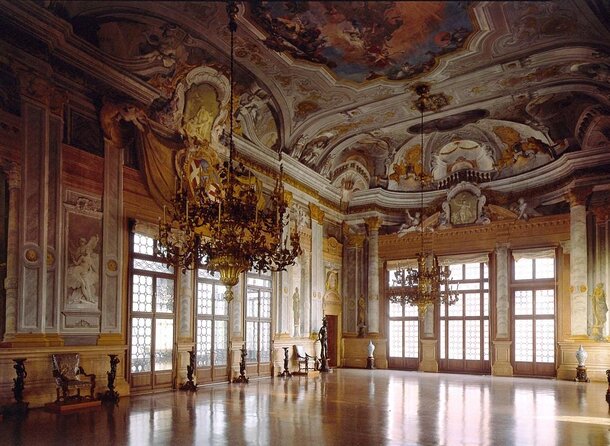
One of the outstanding specimens of the early Venetian Renaissance, sometimes known as the “marble church,” has colored marble, a faux colonnade on the outer walls (pilasters), and a semicircular pediment. Over a period of seven years, from 1990 to 1997, Save Venice Inc. repaired the church (after several years of preliminary research).
- Torcello island
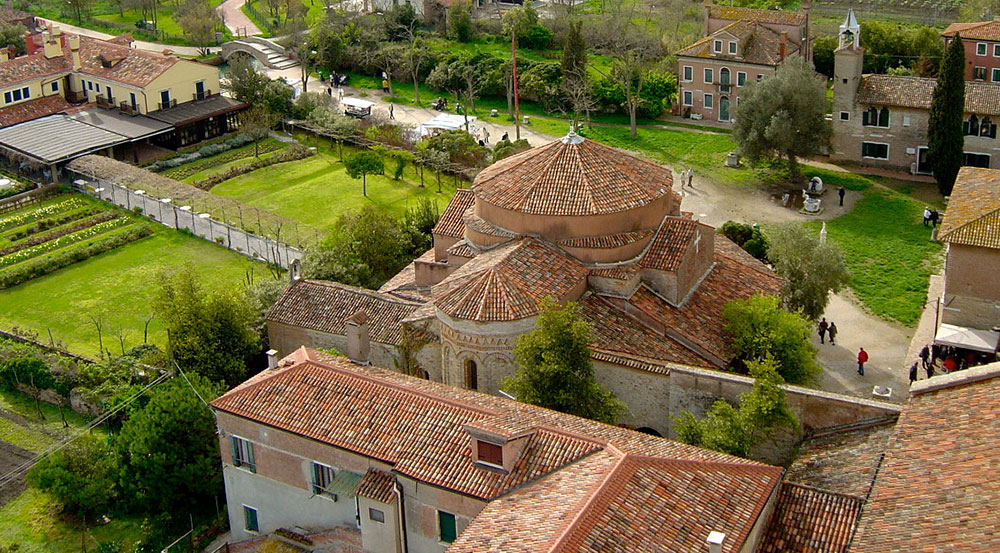
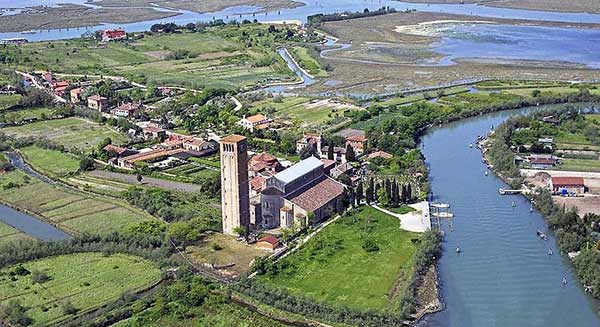
The little island of Torcello has few people, although in the summer it is frequently crowded with tourists. They come to see the Venetian-Byzantine mosaics in the Basilica di Santa Maria Assunta and the views of Burano from the bell tower, or to see the Trono di Attila, a stone bench on the Ponte del Diavolo, a bridge without parapets.
- Lido
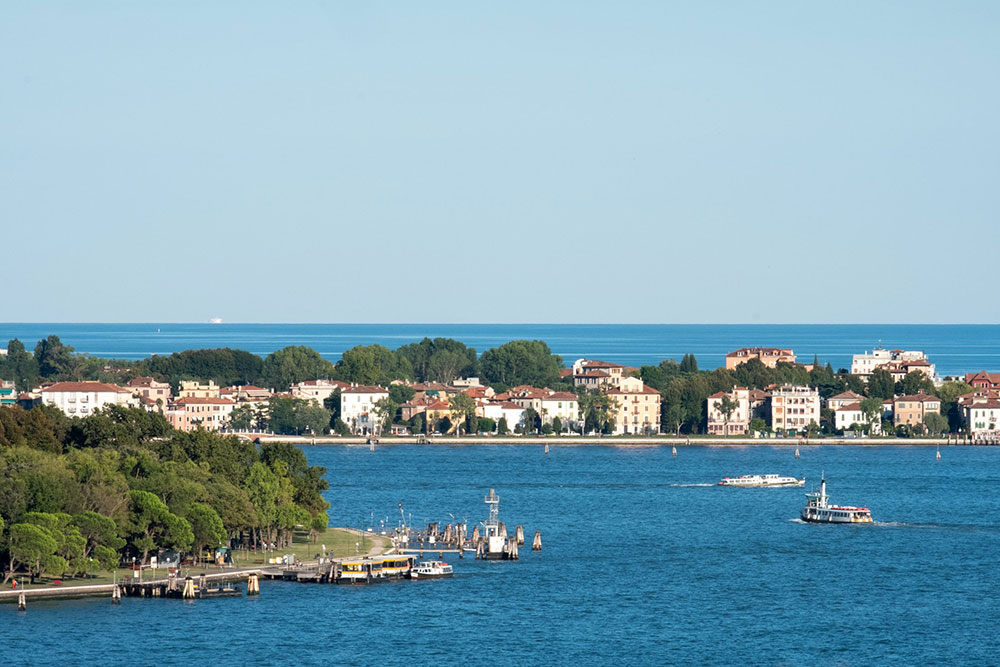
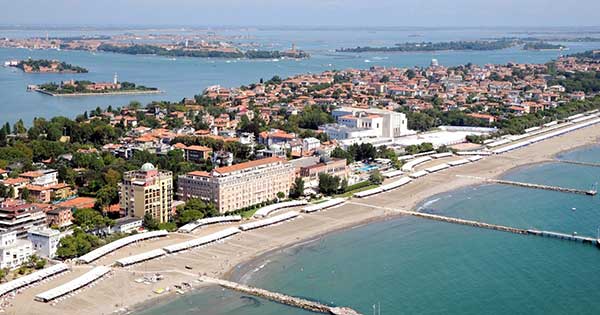
One of the world’s most stunning and distinctive cities is Venice. The Italian beach town of Lido di Venezia, with its upscale seaside resort and spectacular architecture, exudes its unique charm and expressive character. The Lido hosts the Venice Film Festival in late August or early September.
- THE ARSENAL AND THE MUSEUM OF NAVAL HISTORY
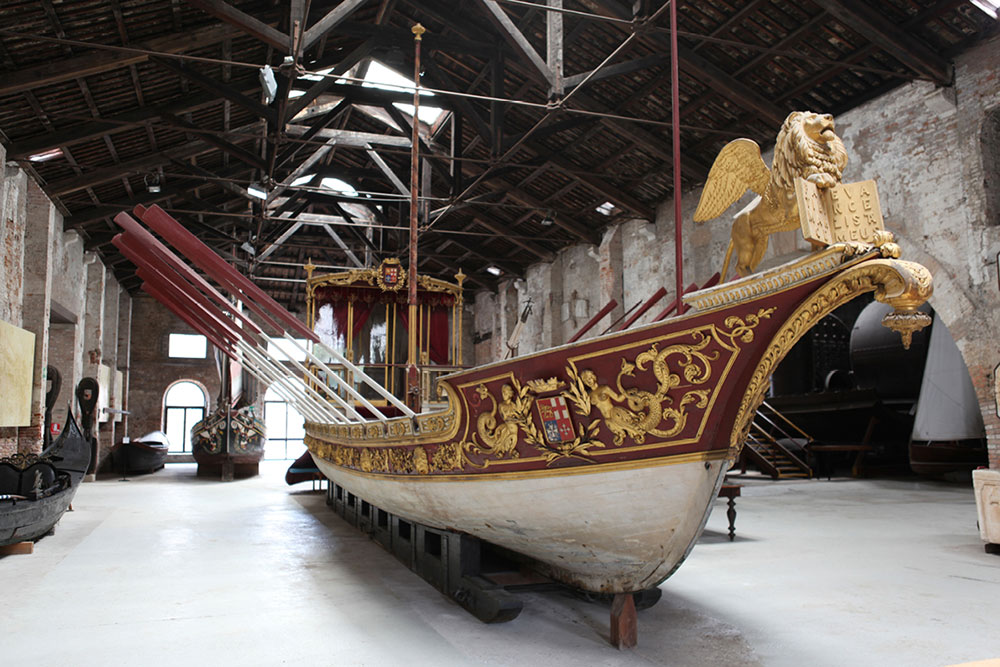
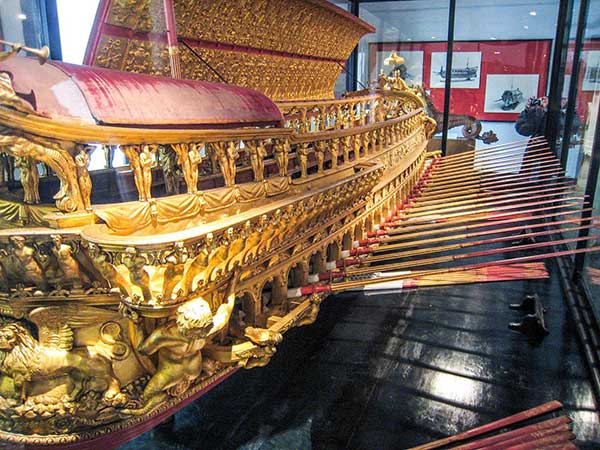
The Historical Naval Museum was established in 1919 and is situated in an ancient granary near the Arsenal in Venice. Its collections are reminiscent of those created during the Venetian Republic, when the shipbuilders’ models were preserved in the Arsenal, in a separate structure called the “Casa dei Modelli.”
- Teatro La Fenice
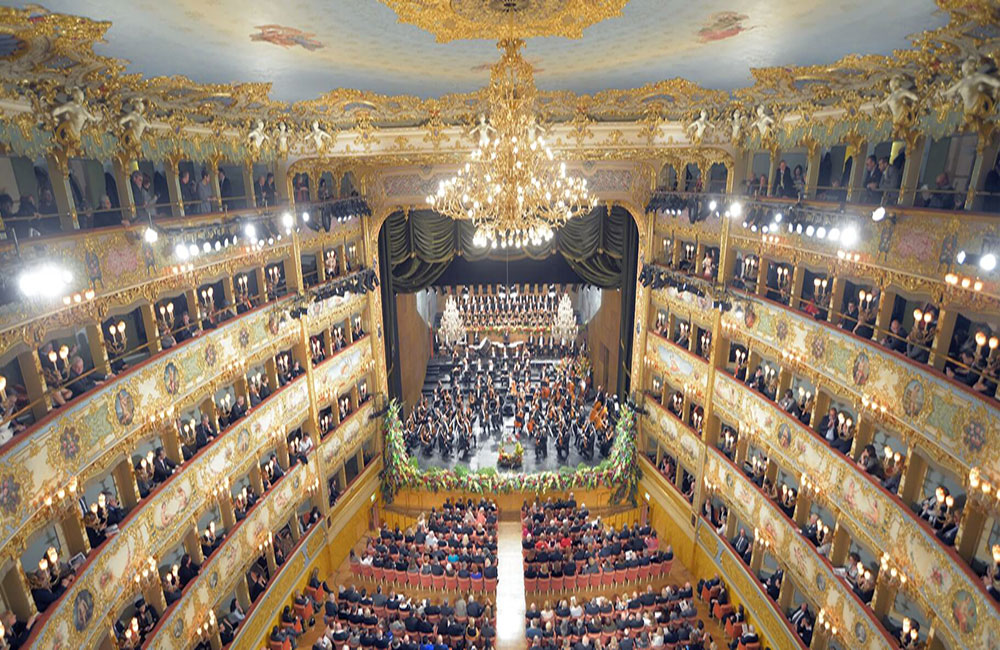
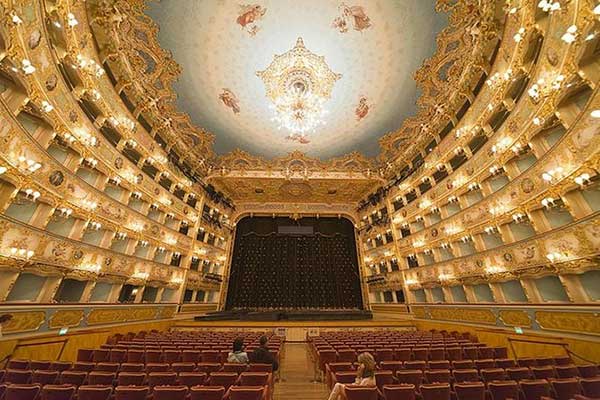
Italy’s Venice is home to the Teatro La Fenice, an opera venue. This renowned opera theatre was destroyed by fire in 1996 and rebuilt amid much intrigue and drama; its contemporary beauty and nuanced past assure its place among the most well-known structures in Italian history.
- Chihesa Della Madonna dell’Orto
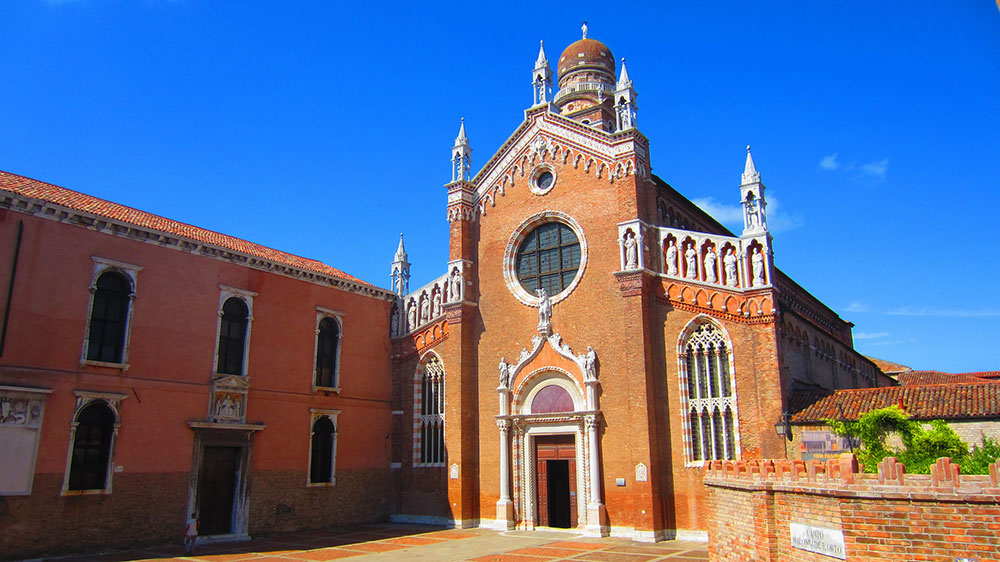
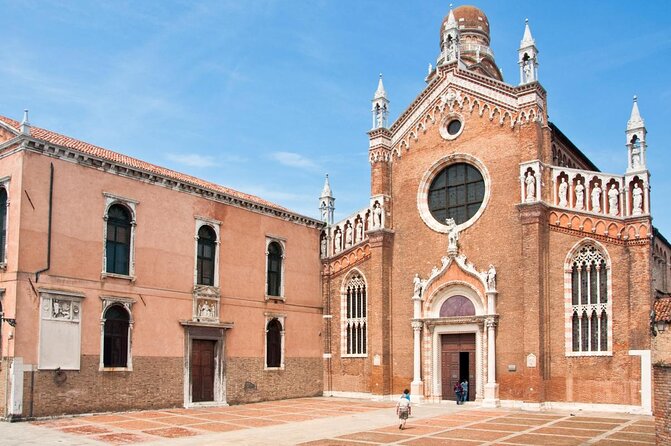
Tiberio da Parma, who is interred within, oversaw the construction of the church on behalf of the now-defunct religious order the “Humiliati” in the middle of the fourteenth century. Although it was first consecrated to St. Christopher, the patron saint of travelers, its well-known name implies that Holy Virgin was consecrated in the next century.
- Jewish Museum
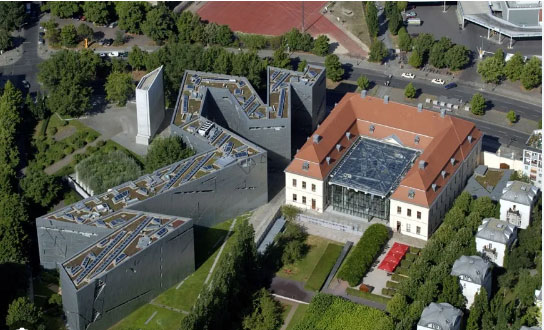
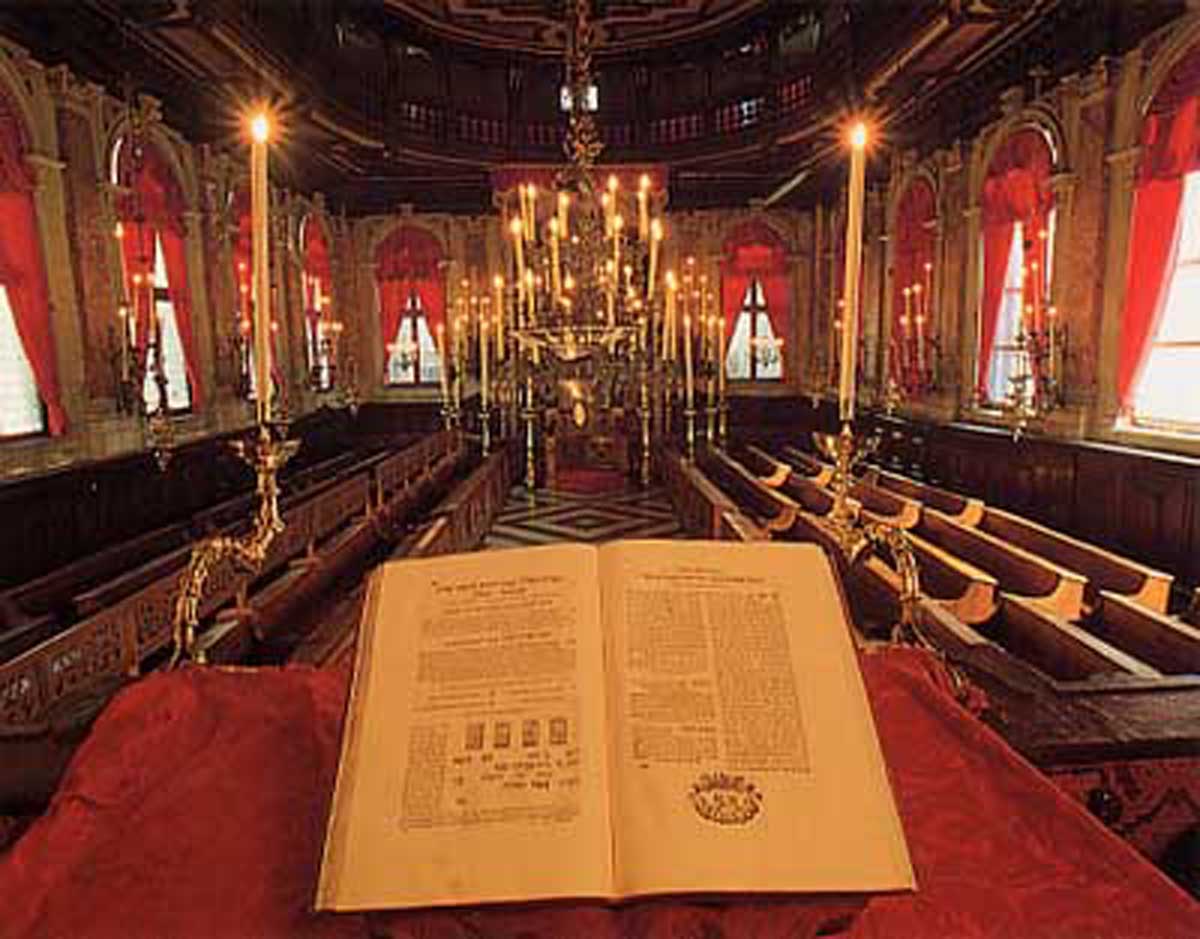
The largest Jewish museum in Europe, the Jewish Museum Berlin, opened its doors in 2001. It comprises three structures, two of which are recent extensions designed by architect Daniel Libeskind, especially for the museum. The collections, library, and archive include information on German-Jewish history, which is also represented in the museum’s program schedule.
- Venetian Arsenal

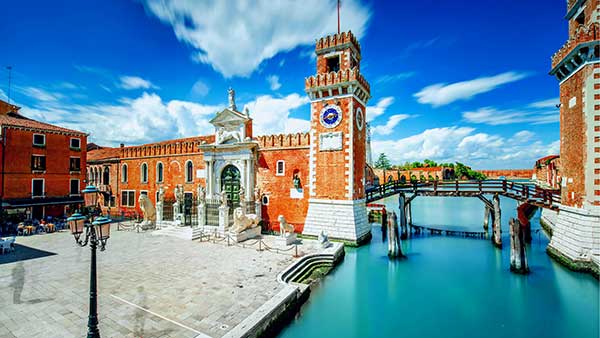
The Venetian Arsenal is a collection of old shipyards and armories gathered in the northern Italian city of Venice. From the late Middle Ages until the early Modern Era, the Venetian Republic’s naval might was mostly derived from the Arsenal, which belonged to the state.
- Santi Giovanni e Paolo
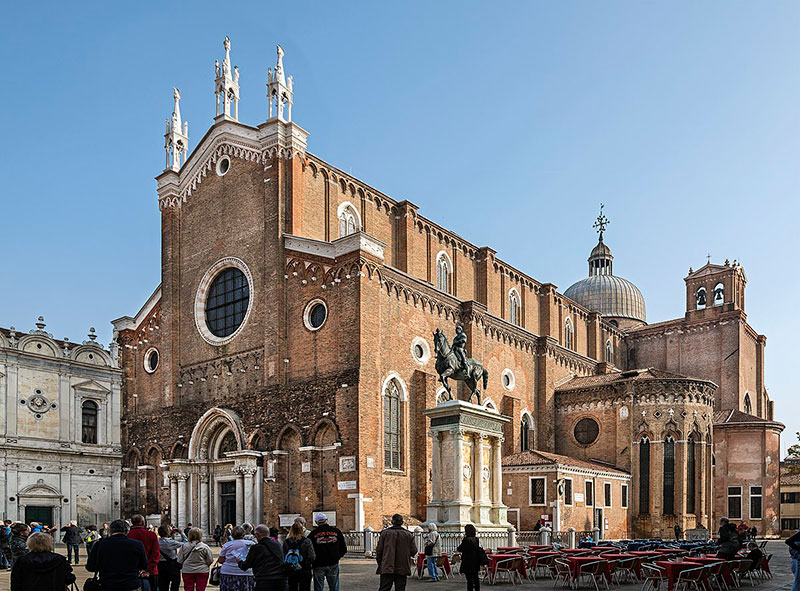
The Basilica dei Santi Giovanni e Paolo, also known as San Zanipolo in Venetian, is a church in Venice, Italy’s Castello district. It has the standing of a minor basilica and is one of the biggest churches in the city. All of Venice’s doges’ burial rites were performed here after the 15th century, and the cathedral is home to 25 doges’ graves.
- Museo Correr
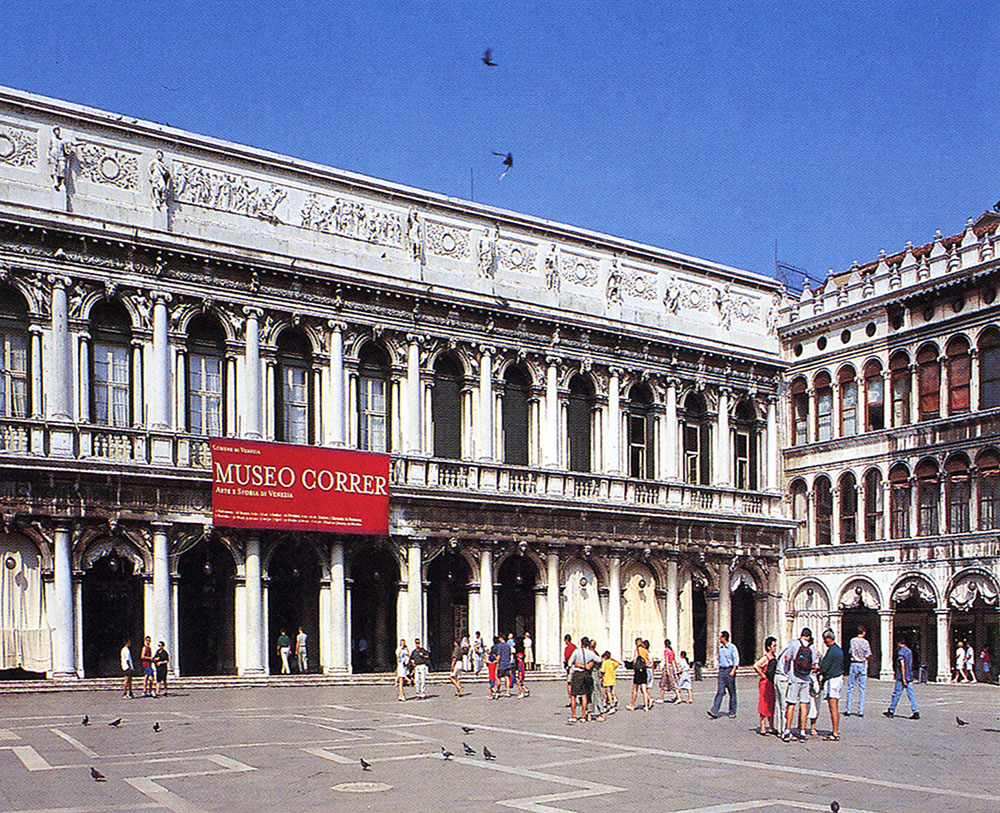
In Venice, northern Italy, there is a museum called Museo Correr. It is one of the 11 municipal museums administered by the Fondazione Musei Civici di Venezia and is situated on St. Mark’s Square in Venice. On the top floors of the Procuratorie Nuove, the museum runs the length of the square’s south side.
- Lido di Venezia

One of the two barrier islands in the Lagoon of Venice is called Lido; the other is called Pellestrina. Lido too became an island of great hotels. Sand beaches line at least half of the seaward shore. The village of Lido’s beach is largely owned by several hotels. The northern and southern ends have sizable public beaches.
- Rialto Market
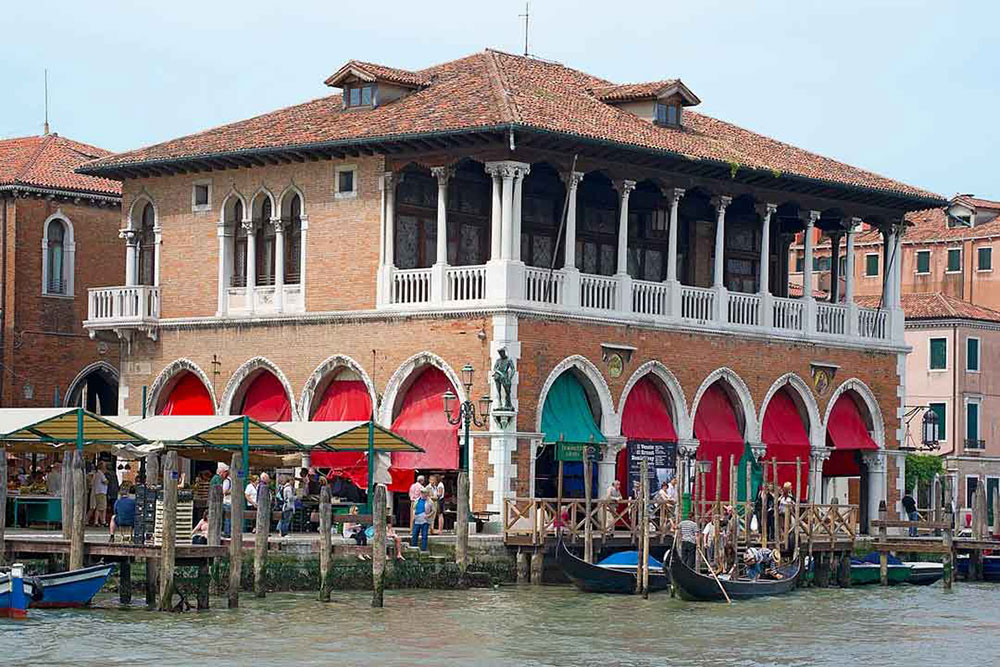
The Rialto Market in Venice is exceptional in the world. The Rialto Market is situated in the San Polo neighborhood, northwest of the Rialto Bridge. The location is to the right, behind the gift shops, along the Grand Canal. Take a journey and explore the narrow streets.
- Ponte dell’Accademia
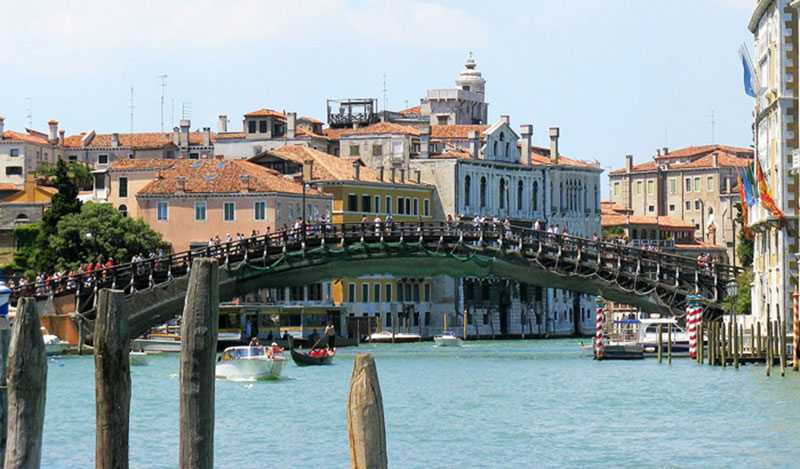
In Venice, Italy, there are only four bridges that cross the Grand Canal. One of them is the Ponte dell’Accademia. The Accademia di Belle Arti di Venezia, which was located in the Scuola della Carità from 1807 to 2004 together with the Gallerie dell’Accademia, which is still there, is honored by the name of the bridge that spans close to the southern end of the canal.
- Punta della Dogana
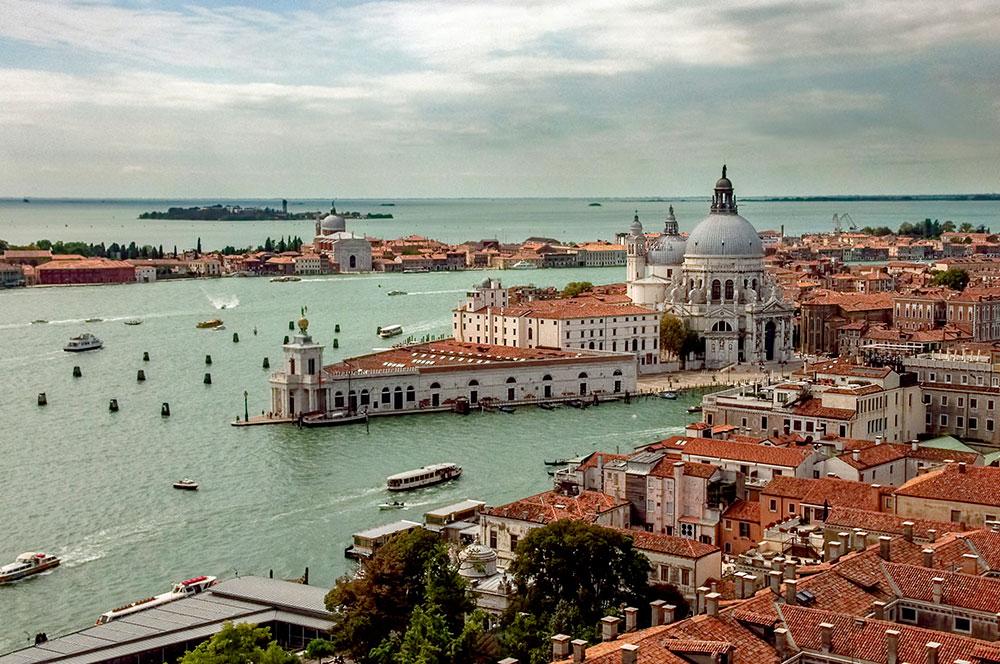
The two museums of the Pinault Collection in Venice at Palazzo Grassi and Punta della Dogana, both of which were renovated by the Japanese architect Tadao Ando. La Pelle, a solo show honoring Luc Tuymans that runs until January 6th, 2020, has more than 80 of the artist’s works from 1986 to the present.
- Venetian Ghetto

Jews were compelled to dwell in a section of Venice known as the Venetian Ghetto by the Venetian Republic’s leadership. The Jewish ghetto in Venice is where the word “ghetto” in English originated. Jews in Venice had previously been required to dwell in a separate portion of the city.
- Torre dell’Orologio
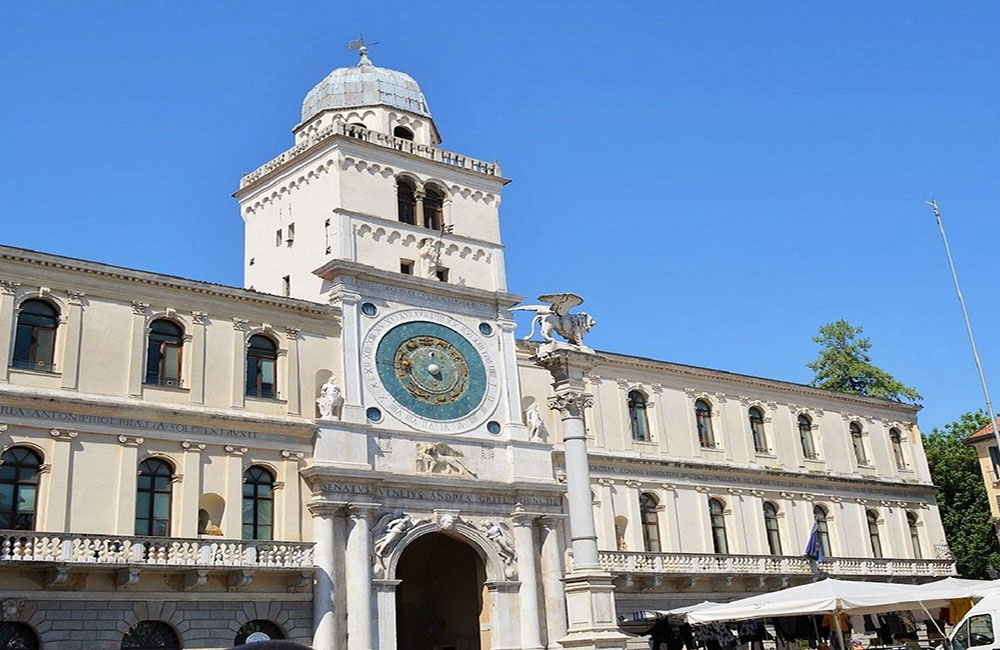
At the entrance to the Merceria on the north side of the Piazza San Marco, the Clock Tower in Venice is an early Renaissance structure. It consists of a tower with a clock within and smaller structures on either side. It borders the Procuratie Vecchie’s easternmost point.
- Campanile
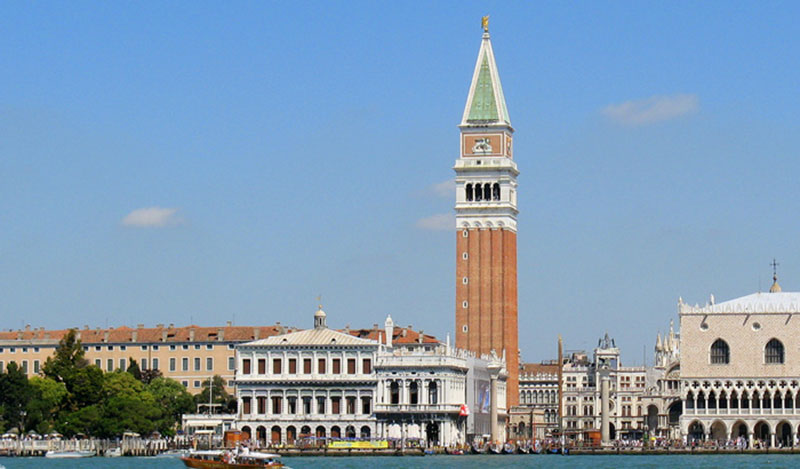
The name “campanile” is most frequently associated with Italian architecture and refers to a bell tower that is typically placed next to or adjacent to a church. The oldest campaniles were simple circular towers with a few tiny round-arched apertures clustered towards the top, dating to variously the sixth to the tenth centuries.
- Bridge of Sighs
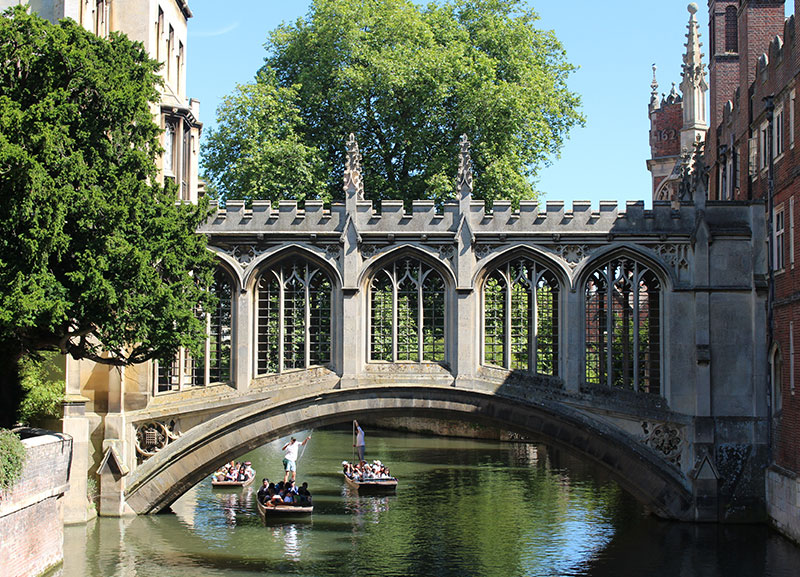
The enclosed bridge connects the New Prison to the interrogation chambers of the Doge’s Palace. It is composed of white limestone, has windows with stone bars, crosses the Rio di Palazzo, and is enclosed. One of the most picturesque locations in a city that is already picture-perfect is the Bridge of Sighs, which is frequently accompanied by gondolas for a touch of Venetian flare.
- San Giorgio Maggiore
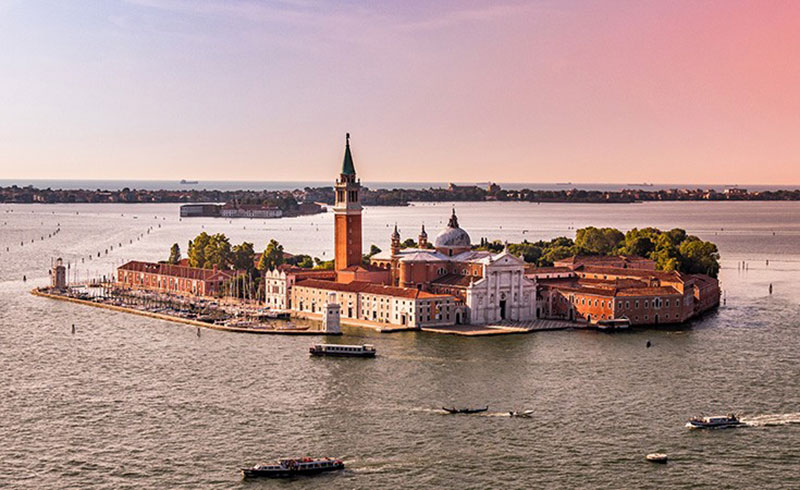
One of the islands of Venice, northern Italy, San Giorgio Maggiore is located south of the main island group and east of the Giudecca. A significant landmark is an island, more notably its Palladian church. It has been shown in several paintings, including a series by Monet.
- Museo Correr
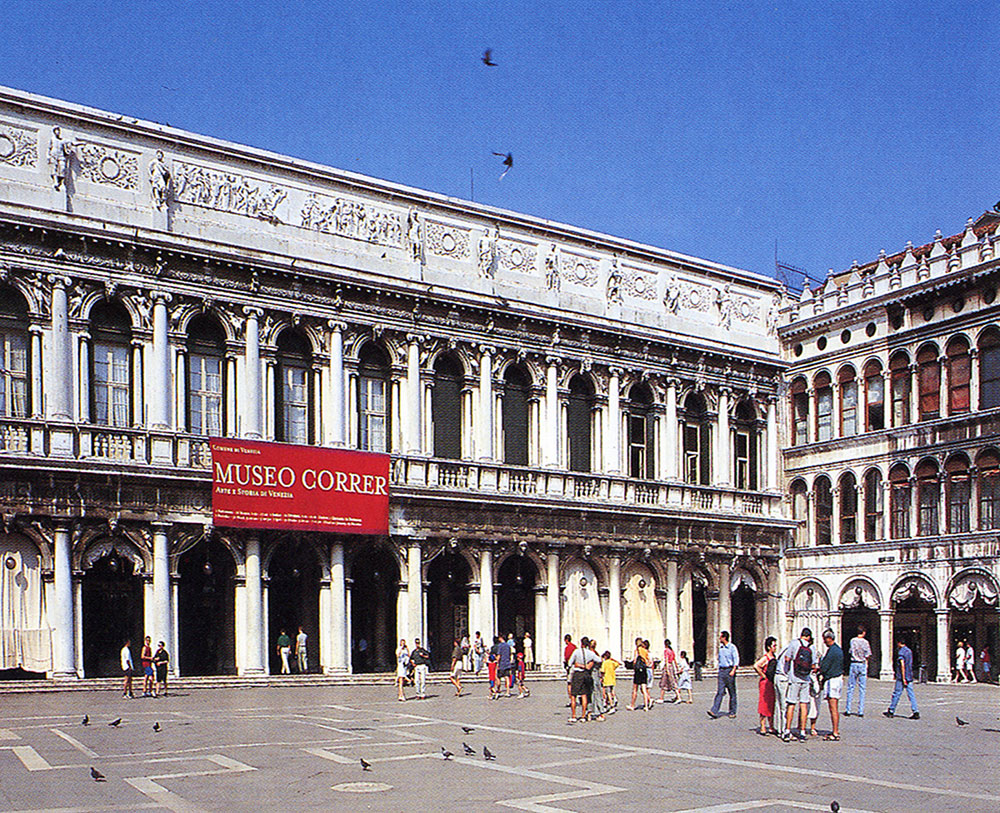
In Venice, northern Italy, there is a museum called Museo Correr. It is one of the 11 municipal museums administered by the Fondazione Musei Civici di Venezia and is situated on St. Mark’s Square in Venice. On the top floors of the Procuratorie Nuove, the museum runs the length of the square’s south side.
- Musica A Pallazo
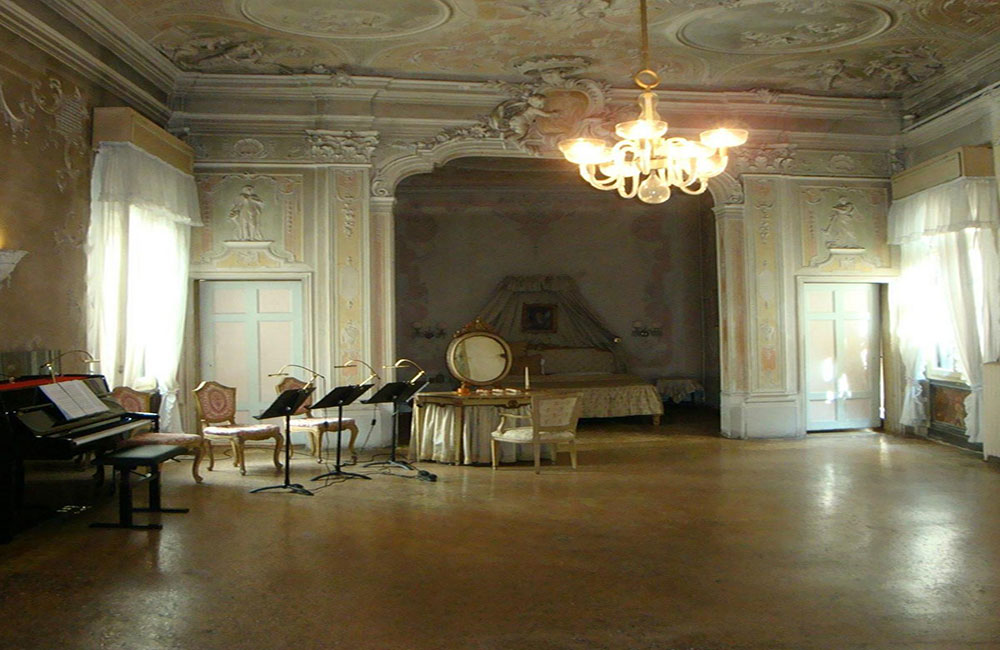
For Accessible Opera, Musica A Pallazo is a mansion in Venice that feels like your living room. Stunningly intimate. Three light and simple operas are available seven evenings a week for your enjoyment. It will enhance the memories of so many individuals that visit Venice.
- T Fondaco Dei Tedeschi
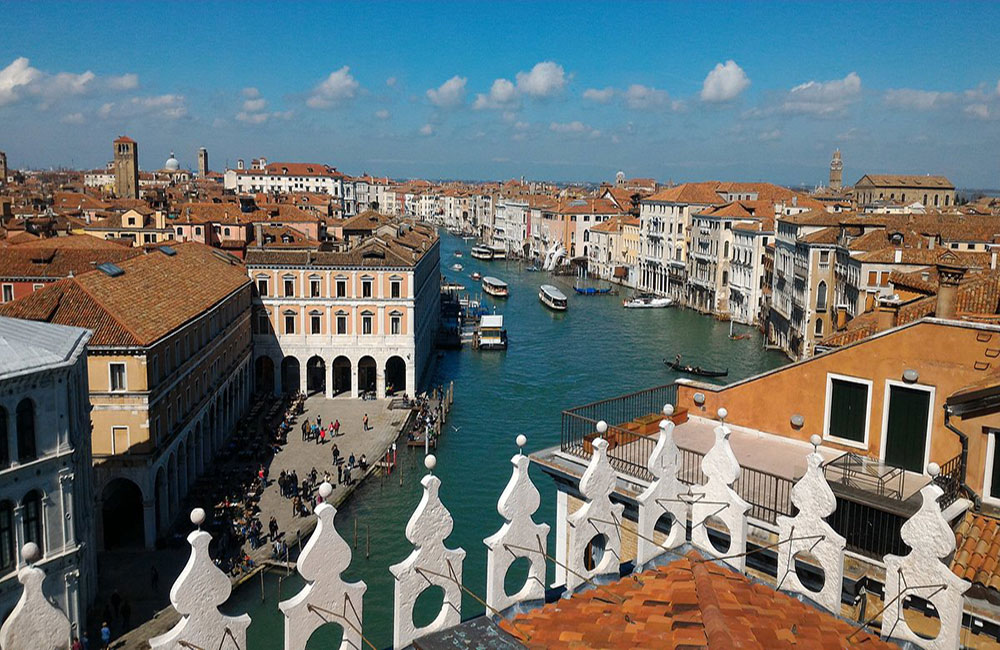
Rem Koolhaas’ extensive renovations have really redefined the structure, allowing anybody to loiter in the court’s center, take in Venice from a privileged vantage point, or explore the several levels’ old remnants of commerce. This is coupled with Jamie Fobert’s interior design, which reinterprets Venetian hues, forms, and materials by fusing the historic and contemporary.
- VENICE FREE TOURS LA BUSSOLA
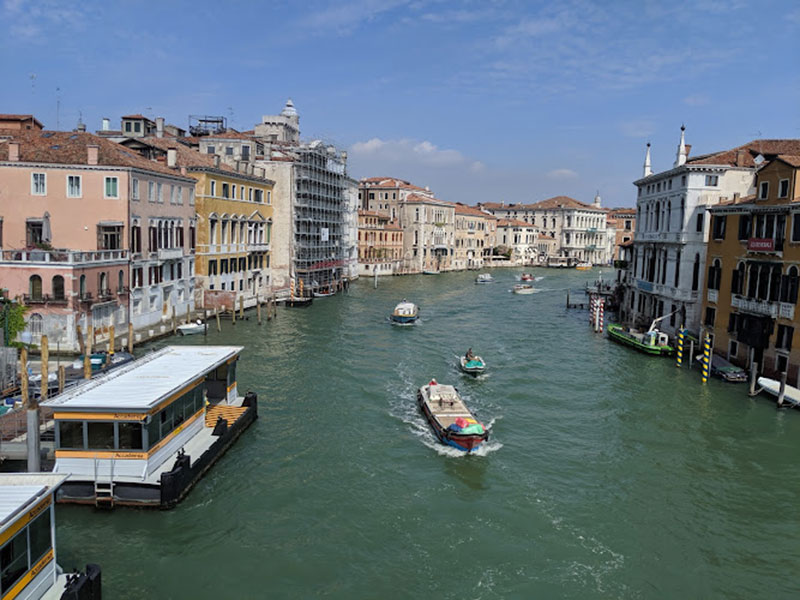
Since the 18th century, when Venice—with its stunning cityscape, singularity, and rich musical and artistic cultural heritage—was a stop on the Grand Tour, tourism has played a significant role in the Venetian economy. Venice developed as a hotspot for the “rich and famous” in the 19th century, who frequently dined and stayed at opulent places like the Danieli Hotel and the Caffè Florian. This status persisted until the early 20th century.
- Church of Santa Maria Assunta
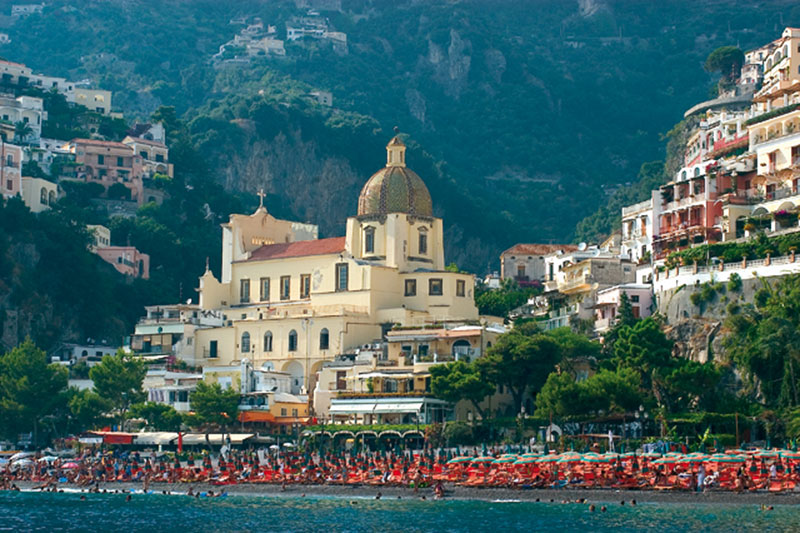
Around 1480 was when the building’s original construction began. In the Parish Church of Santa Maria Assunta, directly below the altar, is where you’ll find the medieval crypt. The 12th century saw its construction. a. C. contains remnants of a Roman villa that stood in Positano in the first century A.D. The interior, which consists of a single nave, was reportedly entirely frescoed between 1491 and 1493 by Giovanni Pietro da Cemmo.
- Canale Grande
The canal runs through the heart of Venice in the shape of a big reverse-S, with one end leading into a lagoon close to the Santa Lucia train station and the other leading into the San Marco basin. It measures 3.8 kilometers (2.4 km) in length, 98 to 295 feet in width, and an average depth of 5 meters (16 feet).
